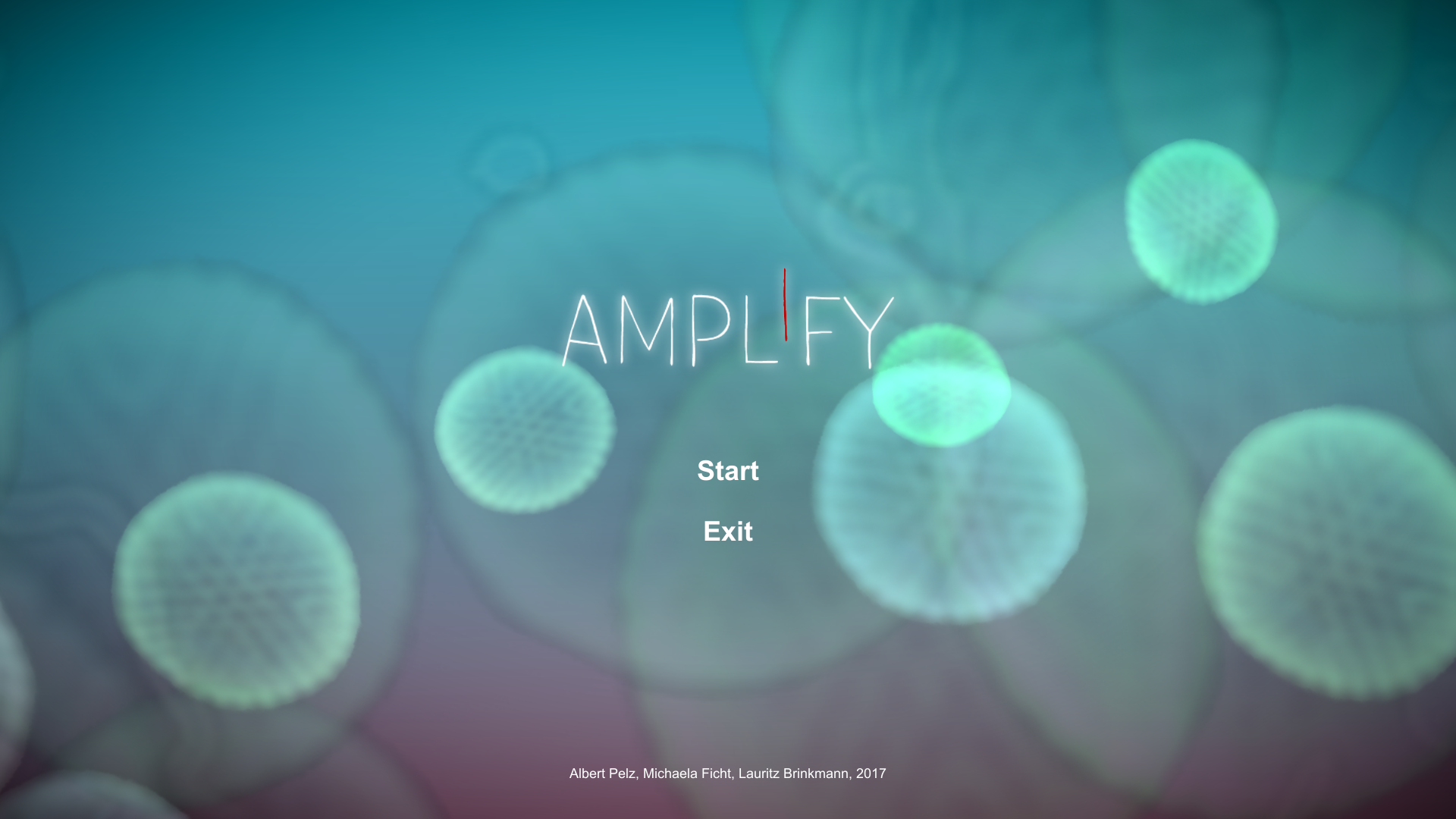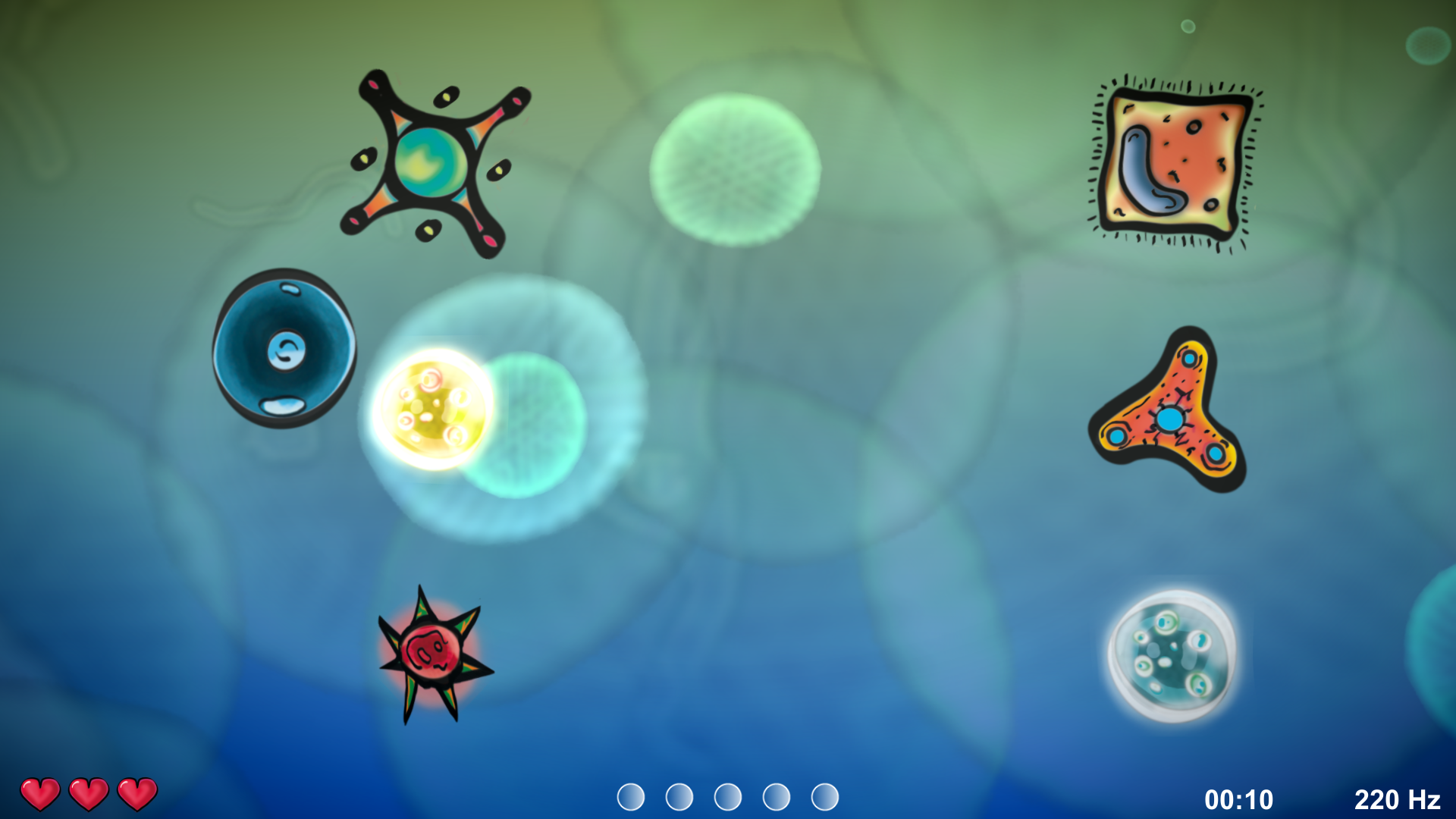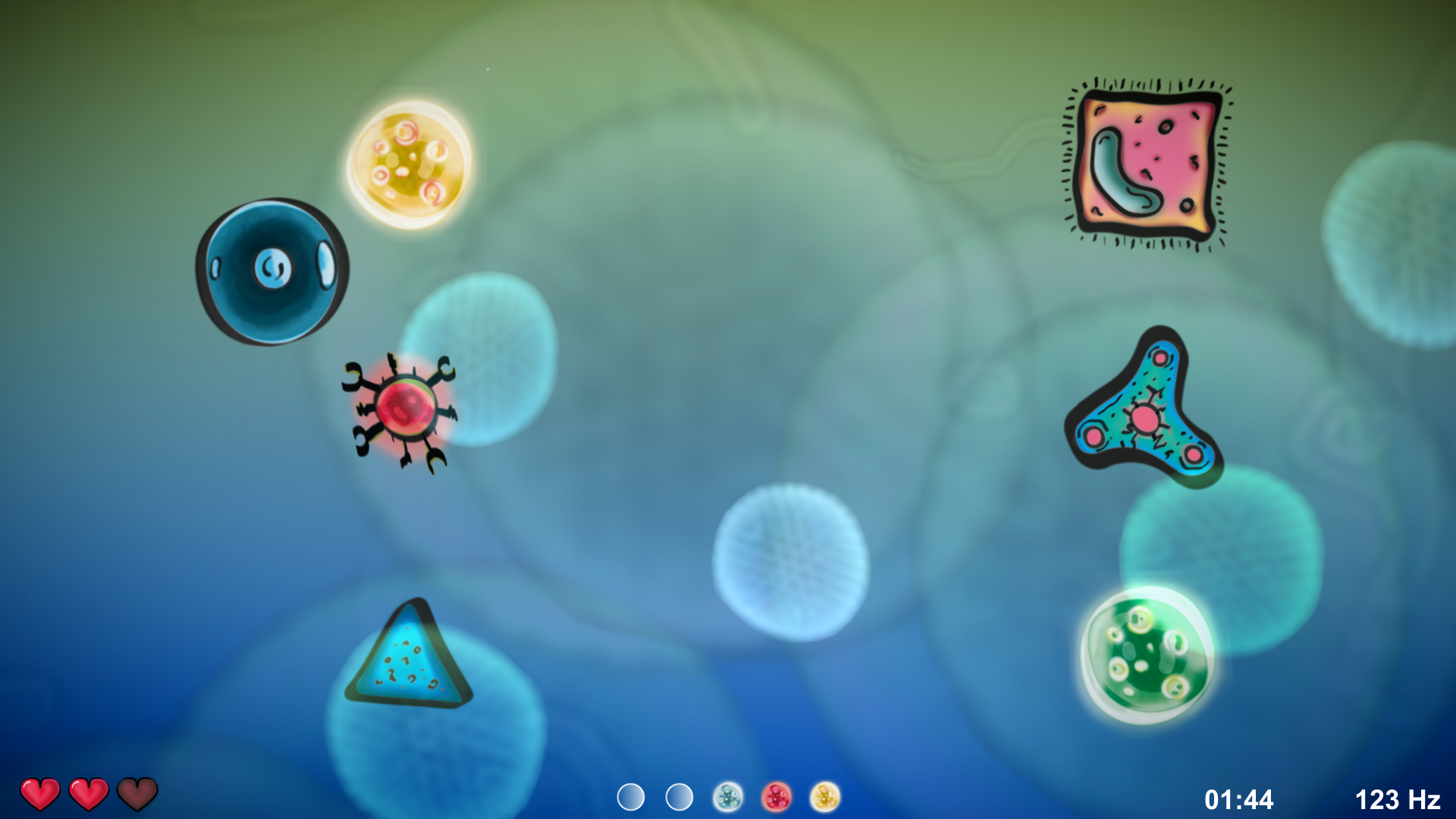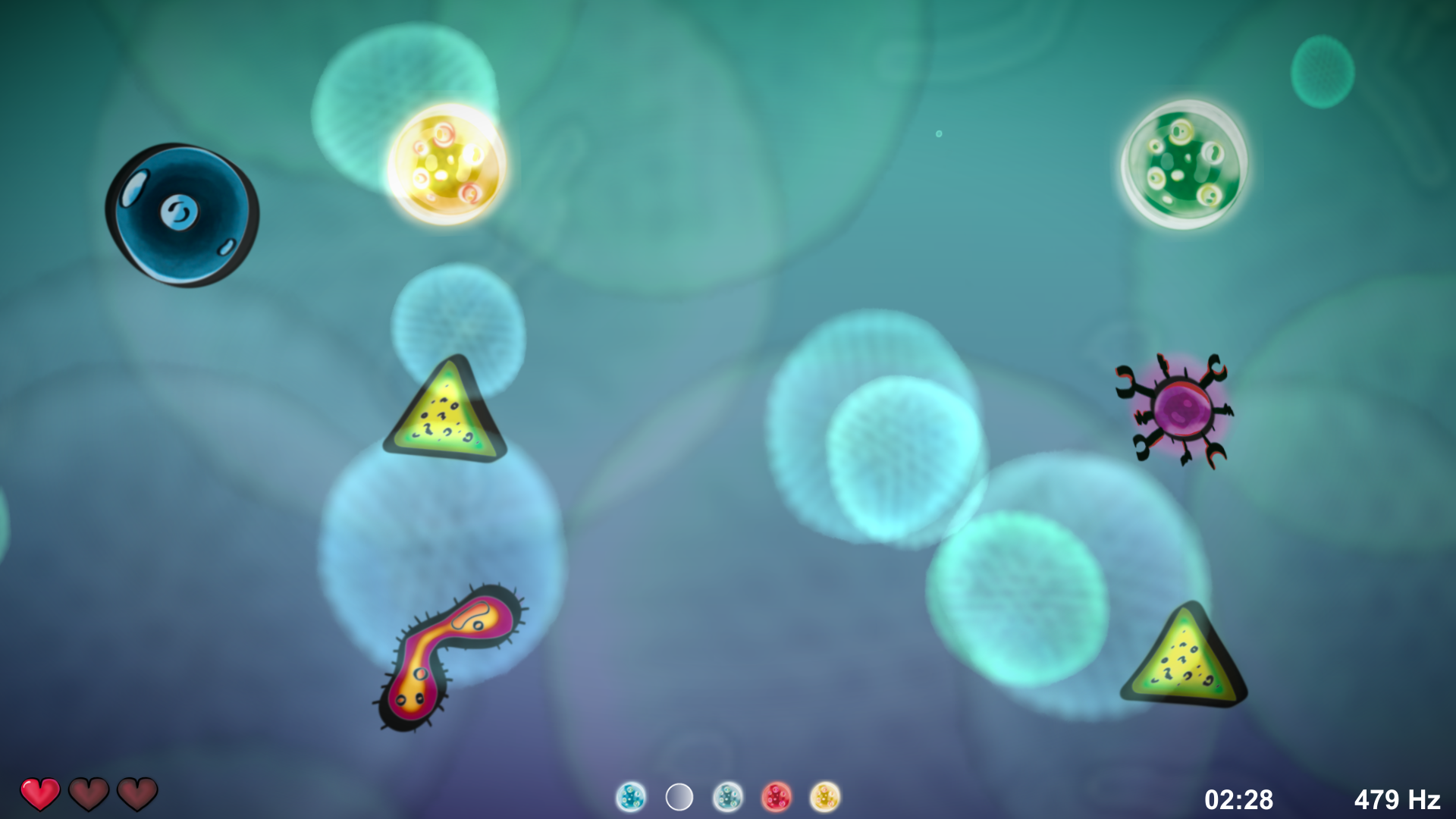Amplify
Playing a video game always involves interactions between man and machine. The player controls the game and performs actions by triggering a certain sequence of electronic inputs. The design of the human-machine interface has a significant impact on gameplay and game feel. "Amplify" is an attempt to get rid of conventional controls and create a direct and intuitive gameplay experience. The result of this experiment is an endless runner controlled by voice.
By varying the pitch of the voice, the player dodges enemies and collects items to increase the score. The game's aesthetics are reminiscent of looking through a microscope. In addition, generative design elements such as procedually generated particle effects, color gradients and movement patterns characterize the graphical direction of “Amplify”.
Within the team I was responsible for the technical implementation of the concept. The voice input is done via a conventional microphone. To determine the sound frequency, a script was written in Processing using the audio library Minim, which analyzes the incoming audio spectrum and filters out the voice frequency. The measured tone value is transmitted to Unity via an OSC signal to influence the character's movement.
Whether it moves up or down depends not on the voice frequency alone, but on the difference from the previously measured tone. Thus, the character is rather controlled by a sequence of tones and calibration to the player's voice spectrum is not necessary. Since the audio input via the microphone is a very open interface, the player can control the game not only with his voice, but also, for example, by whistling or playing a musical instrument.
"Amplify" was developed as part of the master's program "Media and Game Design" for the subject "Human-Computer-Interaction" at the Harz University of Applied Sciences. Among other things, it was exhibited at the open day of the Harz University of Applied Sciences in 2017 and could be played by visitors on site.
Development period:
October 2016 - February 2017
Technologies:
Unity | Processing | Adobe Photoshop
Other project members:
Michaela Ficht | Albert Pelz





